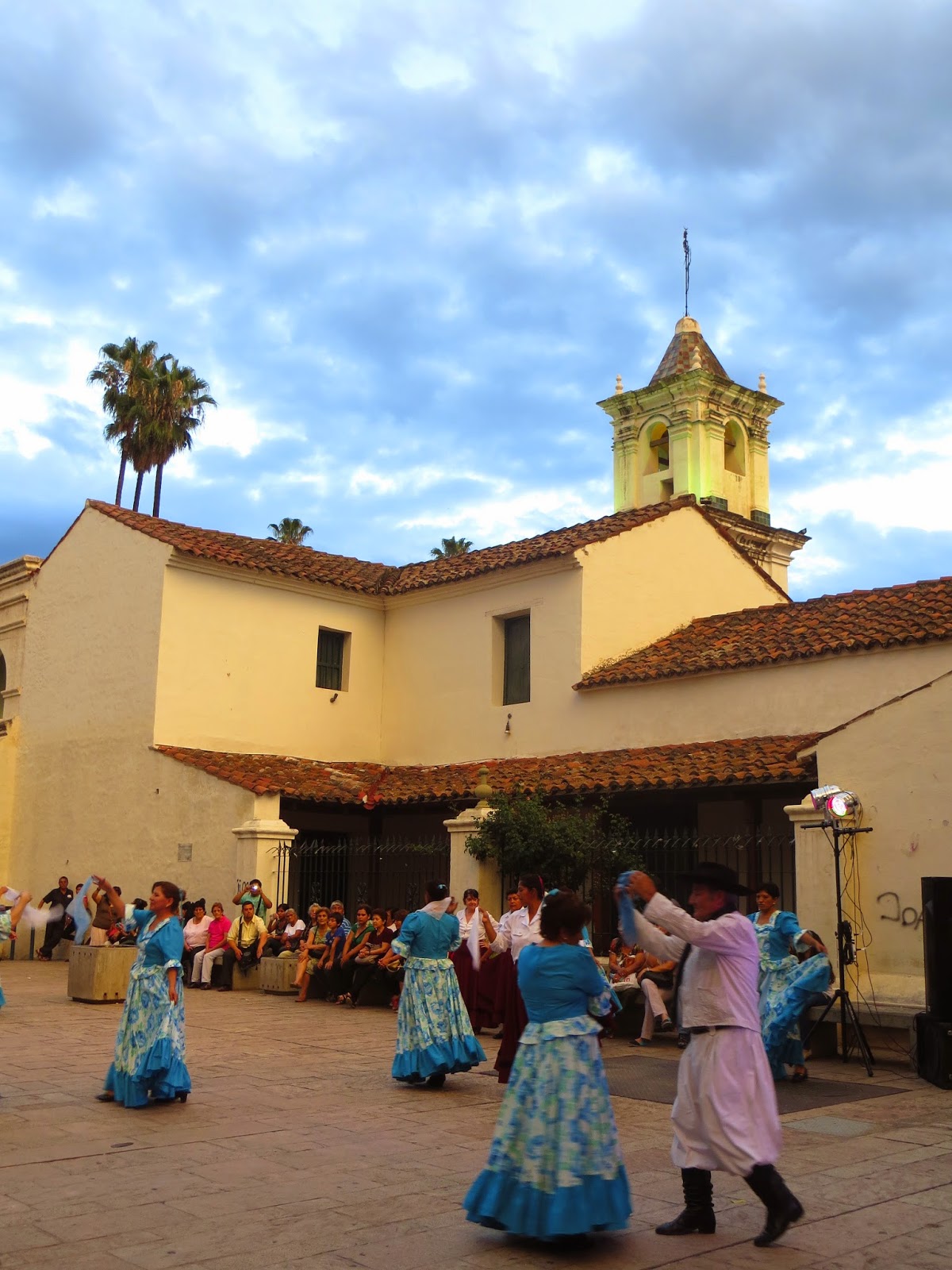 |
| Cathedral in Cordoba |
After three memorable
days in Cafayate, we took a bus to the Tucuman province. Once again we witnessed some
amazing landscapes on the way before arriving at the capital city San Miguel de
Tucuman at 7 pm. We didn’t like the vibes in this city, and caught an overnight
bus to Cordoba the same night. This is the beauty of travelling and going with the flow: you never feel stuck in a situation or in a place you don't enjoy.
We arrived at Cordoba in
the early morning of December 24th 2013. We thought spending
Christmas in the second biggest city of Argentina would be fun. We took a taxi
to the Link Hostel . It is an OK place to
stay but wasn’t extraordinary. The problem we had was that we arrived in
Cordoba in the middle of a heat wave and our room didn’t have air-conditioning.
The ceiling fan was simply not enough and it was very close to the upper bunk-bed which did not feel safe at all. We decided to stay the night with the hope that it might cool down in the evening.
%2B%2B%2B%2B%2B%2B%2B%2B%2B%2B%2B%2B%2B%2B%2B%2B%2B%2B%2B%2B%2B%2B%2B%2B%2B%2B%2B%2B%2B%2B%2B%2BCanon%2BCanon%2BPowerShot%2BSX240%2BHS%2B(4000x3000).JPEG) |
| Streets of Cordoba |
In the afternoon, we
walked around in the city and exchanged some more “Blue Dollars”. Each province
has different rules and regulations. While we didn’t have any problems
exchanging money in the middle of a street in Salta, the process was slightly
more hidden in Cordoba. We were taken into a news agency where we couldn’t be seen
from outside while exchanging dollars. An interesting fact about Argentina was that the more south we travelled, the more expensive it got.
We spent the
Christmas night in the hostel as nothing was open. Thankfully, we still had some wine and cheese from Cafayate, so we enjoyed a nice dinner! We joined the hostel staff and few travellers on the rooftop to watch the fireworks. It was a fun night but we couldn’t sleep much
because of the heat. The next day, we decided to look for another hostel.
%2B%2B%2B%2B%2B%2B%2B%2B%2B%2B%2B%2B%2B%2B%2B%2B%2B%2B%2B%2B%2B%2B%2B%2B%2B%2B%2B%2B%2B%2B%2B%2BCanon%2BCanon%2BPowerShot%2BSX240%2BHS%2B(4000x3000).JPEG) |
| Light show in Cordoba |
After visiting a
couple of places which were either not open during Christmas or fully booked,
we found a quiet hostel not too far from the city centre. We had a good afternoon nap
and went out to the movies. I couldn’t believe how cheap the cinema tickets
were. We paid $10 for both of us whereas in Sydney we used to pay around $18 if
not more per person. Cinema was a brilliant idea with outside temperatures more
than 40 degrees Celsius. And yes, they had air-conditioning.
A surprise was
waiting for us when we got back to our room. We discovered that there was an
open air techno club right next door. Noooo! Another sleepless night. Later we
were told that Cordoba has one of the biggest student population and there are many bars and
clubs in the New Cordoba where we were staying. We checked out in the morning
and went to Villa Carlos Paz, a small village by the San Antonio River, which is not more than an hour away from Cordoba. It is quite popular amongst the locals for its relaxed vibes and cultural activities.
 |
| San Antonio River |
It was great to get
out from the oven of Cordoba. Carlos Paz felt like a seaside town without the
sea. However, there is always the option of cooling down in the shallow streams
of San Antonio River. Indeed, we saw many locals relaxing by the river. At
night, we went to our first theatre performance in Argentina. The play was
called "Toc Toc" and it was a comedy about a psychotherapist treating people with
different Obsessive-compulsive disorders. Although it was in Spanish, I managed
to understand most of it thanks to my teacher’s (Magus) great efforts in Ecuador.
The next day, we
returned to Cordoba for one more night. This time we stayed at the Tango Hostel which turned out to be a good address. During
our last day in Cordoba, we visited La Manzana Jesuitica or Jesuit Square which
was declared as a World Heritage Site by UNESCO, Evita Fine Arts Museum and Museo Palacio Ferreyra, both were excellent art museums.
%2B%2B%2B%2B%2B%2B%2B%2B%2B%2B%2B%2B%2B%2B%2B%2B%2B%2B%2B%2B%2B%2B%2B%2B%2B%2B%2B%2B%2B%2B%2B%2BCanon%2BCanon%2BPowerShot%2BSX240%2BHS%2B(1600x1200).JPEG) |
| Evita Fine Arts Museum |
After four sleepless nights in Cordoba, it was time to
visit Mariana whom we met in Santiago de Cuba in August.

%2B%2B%2B%2B%2B%2B%2B%2B%2B%2B%2B%2B%2B%2B%2B%2B%2B%2B%2B%2B%2B%2B%2B%2B%2B%2B%2B%2B%2B%2B%2B%2BCanon%2BCanon%2BPowerShot%2BSX240%2BHS%2B(4000x3000).JPEG)
%2B%2B%2B%2B%2B%2B%2B%2B%2B%2B%2B%2B%2B%2B%2B%2B%2B%2B%2B%2B%2B%2B%2B%2B%2B%2B%2B%2B%2B%2B%2B%2BCanon%2BCanon%2BPowerShot%2BSX240%2BHS%2B(4000x3000).JPEG)

%2B%2B%2B%2B%2B%2B%2B%2B%2B%2B%2B%2B%2B%2B%2B%2B%2B%2B%2B%2B%2B%2B%2B%2B%2B%2B%2B%2B%2B%2B%2B%2BCanon%2BCanon%2BPowerShot%2BSX240%2BHS%2B(1600x1200).JPEG)













